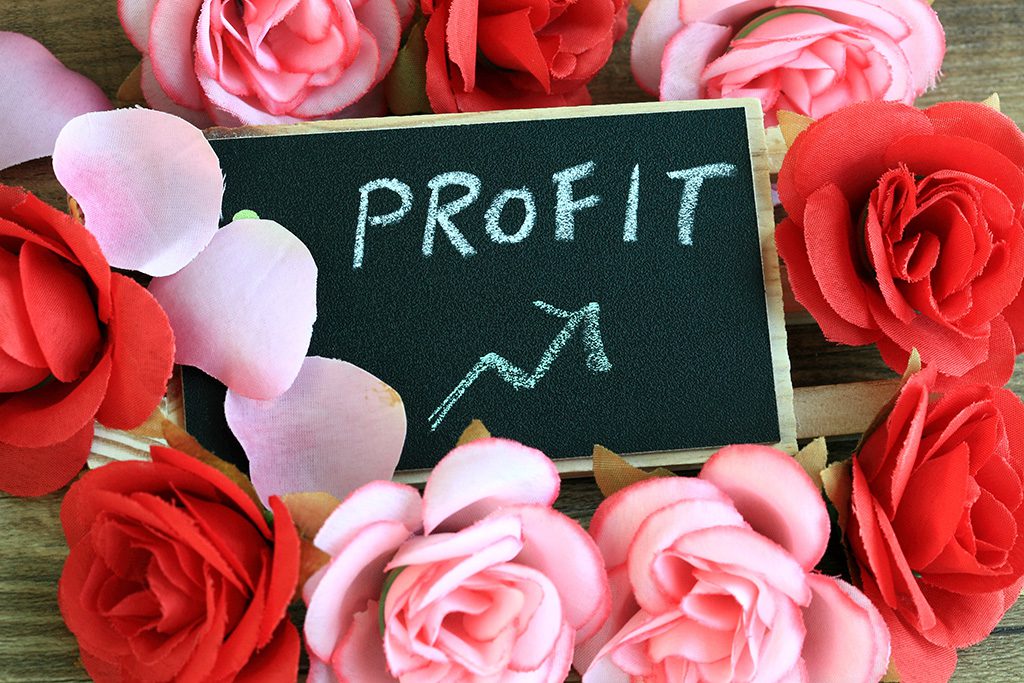
As Mother’s Day approaches, savvy florists are carefully tracking their expenses and adjusting prices to ensure one of the biggest floral holidays of the year is also one of the most profitable.
“You have to price for profitability, not what you think your customers want to pay,” says L. Lynne Moss, AAF, AIFD, PFCI, of The Flower Shoppe in Pratt, Kansas.
That mindset paid off at Valentine’s Day. Moss didn’t receive any pushback from customers over the higher price tags and delivery fees. Customers ordered what suited them and their budgets — and Moss was prepared to accommodate with a wide range of price points.
“If you are not going to make a profit and become successful in this industry, it is not worth the long hours and passion you put into it,” Moss says. “Even if your competition may have lower prices, you have to stay true to yourself and price according to your investment.”
Examine Expenses
To ensure all her arrangements are profitable, Moss digs into every line item on her expenses, from vendor fees and credit card processing fees to labor and delivery.
“Most hard goods suppliers are now charging a packing fee, pallet fee, and lift gate fee, which could add several dollars to the pricing of a container,” she says. “You have to look at that closely, not price from the catalog or holiday brochure, but from the actual invoice being charged to you.”
Moss also adjusts her prices to account for credit card processing fees. If florists don’t account for these additional fees when pricing arrangements, every credit card swipe eats into their profits.
Adam Sholes, owner of The Black Opal Florist in North Attleboro, Massachusetts, says all those line items have increased over the past few years. He notes a 40 percent increase in flowers and a 20 percent increase for both plants and hard goods. In addition, he’s seen increasing overhead costs. The storefront rent, for example, has more than doubled.
“We have been forced to make price adjustments to compensate,” Sholes says. “I made up my mind that if I could not make a profit on a sale, there was no point to it. We made sure that our pricing reflects our cost increases and have concentrated on a slightly higher priced product mix.”
He braced himself for customer resistance, “but that never materialized.”
Look at Labor
Florists also have to consider rising labor costs when pricing arrangements. In “The Price Is Right,” published in the January/February issue of Floral Management, Derrick P. Myers, CPA, CFP, PFCI, says adding 20 percent to the overall cost to account for labor may be outdated. In states where legislation has raised the minimum wage, florists may need to add upwards of 30 percent to maintain healthy profit margins.
“Maintaining a profit margin is becoming increasingly difficult,” Myers says, and there is a trick that’s critical to get the right calculation. “You cannot simply multiply the product cost by the labor percentage and get the proper cost of labor,” he says. Instead, use the inverse of the labor percentage. For example, if your labor percentage is 25%, you’d divide the product markup by 75 (the inverse of 25%), to calculate the labor for that arrangement.
Sholes recommends taking into account the value add and not your competitors’ prices when setting prices in order to run an efficient, profitable business.
Don’t Forget Your Value Proposition
“My advice to fellow florists is: Know your worth,” Sholes says. “Sell a quality product that differentiates you and charge what you’re worth. Don’t try to compete with mass merchandisers. You will never win. Go after the customer who wants a higher level and is willing to pay for it.”
Want more help pricing for profit? The Society of American Florists’ course “Creating Recipes for Success,” created by veteran retail florist Tony Fiannaca of Sparks Florist in Sparks, Nevada, is available on the Floral Education Hub. The course, sponsored by GotFlowers?, is free for SAF members; $14.95 for non-members.
And, check out SAF’s updated, step-by-step Mother’s Day Survival Guide for more guidance on getting ready for a profitable holiday.
Laurie Herrera is a contributing writer for the Society of American Florists.

